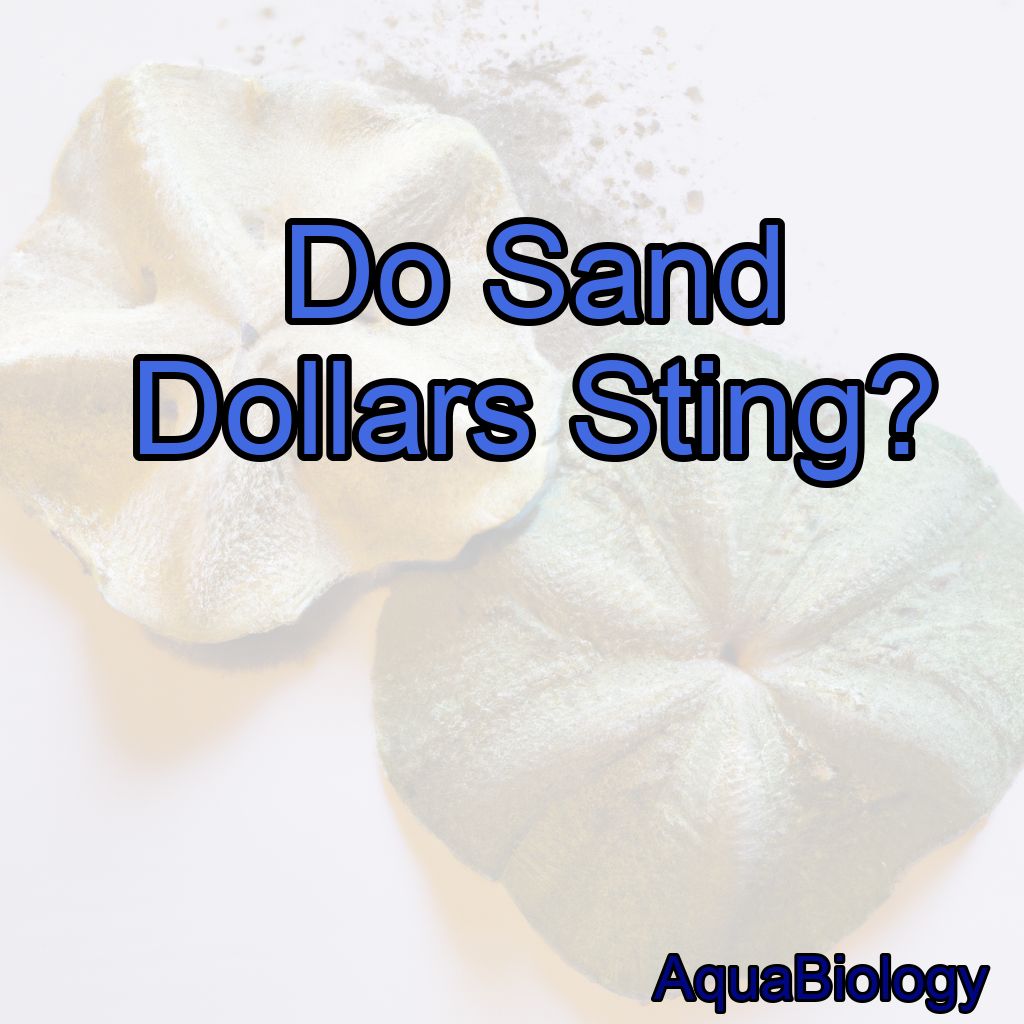As a marine biologist with a love for sand dollars, one of the most common questions I get asked is, “Do sand dollars sting?” The answer is no, sand dollars do not sting.
No, sand dollars do not sting.
In this blog post, I will explain why they do not sting and provide some interesting facts about these fascinating creatures.
What are Sand Dollars?
Before we dive into the question, it’s important to understand what sand dollars are.
Sand dollars are echinoderms, which means they are related to sea stars, sea urchins, and sea cucumbers.
They are flat, disk-shaped creatures that are covered in tiny spines called cilia.
These spines help them move and also protect them from predators.
Sand dollars can vary in size, with some species reaching up to 4 inches in diameter.
Why Don’t Sand Dollars Sting?
Sand dollars do not have any stinging cells, like jellyfish or sea anemones.
They are not venomous and do not have any toxins in their bodies.
Instead, they rely on their hard exoskeletons for protection.
Their exoskeleton is made up of tiny plates that are held together by connective tissue.
These plates are arranged in a flower-like pattern, with a distinct five-pointed shape that is characteristic of sand dollars.
How Do Sand Dollars Feed?
Sand dollars are filter feeders, which means they feed on small plankton and organic particles that are suspended in the water.
They use their spines to move water over their bodies, which helps them capture food.
The food is then moved to their mouth, which is located on the underside of their body.
Where Do Sand Dollars Live?

Sand dollars are found in many parts of the world, including the Pacific and Atlantic Oceans, as well as the Mediterranean Sea. They are typically found in shallow waters, near the shore.
They live in sandy or muddy bottoms and can be found in large groups or individually.
What Are Some Interesting Facts About Sand Dollars?
1. Sand dollars have a unique way of reproducing. They release their eggs and sperm into the water, and fertilization occurs externally. The eggs then develop into tiny larvae, which eventually settle on the ocean floor and grow into adult sand dollars.
2. Sand dollars have a unique way of moving. They use their spines to “walk” along the ocean floor, leaving behind a track that resembles a flower.
3. Sand dollars are often used in arts and crafts. Their hard exoskeletons can be bleached and used to make jewelry, ornaments, and other decorative items.
4. Sand dollars are an important part of the marine ecosystem. They provide food for many animals, including crabs, starfish, and sea birds.
5. Sand dollars are incredibly resilient. They can survive in a wide range of water temperatures and salinity levels, and can regenerate lost limbs.
Conclusion
In conclusion, sand dollars do not sting. They are fascinating creatures that rely on their exoskeletons for protection, and they feed on small plankton and organic particles that are suspended in the water.
They are filter feeders and can be found in shallow waters near the shore. Sand dollars have a unique way of reproducing and moving, and they are an important part of the marine ecosystem.
So the next time you see a sand dollar, you can rest assured that it won’t sting you!
FAQs
What happens if a sand dollar stings you?
Sand dollars do not sting.
They are not capable of stinging or causing harm to humans.
Does touching sand dollars hurt them?
Yes, touching sand dollars can hurt them.
Sand dollars have a delicate, fragile exoskeleton that can easily break or become damaged when handled.
It is best to observe them in their natural habitat and avoid touching them if possible.
Can a sand dollar feel pain?
No, sand dollars do not have a brain or nervous system and therefore cannot feel pain.
Is it OK to pick up a live sand dollar?
No, it is not OK to pick up a live sand dollar as it can harm the animal and disrupt the ecosystem.
What happens if you snap a sand dollar in half?
If you snap a sand dollar in half, it will die as its internal organs will spill out.
Is it bad to pick up sand dollars?
Yes, it is bad to pick up live sand dollars as it can harm them and disrupt their ecosystem.
It is better to leave them be and enjoy their beauty from a distance.




